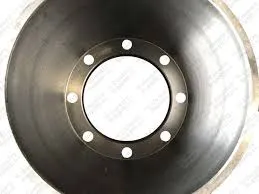
-
 Afrikaans
Afrikaans -
 Albanian
Albanian -
 Amharic
Amharic -
 Arabic
Arabic -
 Armenian
Armenian -
 Azerbaijani
Azerbaijani -
 Basque
Basque -
 Belarusian
Belarusian -
 Bengali
Bengali -
 Bosnian
Bosnian -
 Bulgarian
Bulgarian -
 Catalan
Catalan -
 Cebuano
Cebuano -
 Corsican
Corsican -
 Croatian
Croatian -
 Czech
Czech -
 Danish
Danish -
 Dutch
Dutch -
 ਅੰਗਰੇਜ਼ੀ
ਅੰਗਰੇਜ਼ੀ -
 Esperanto
Esperanto -
 Estonian
Estonian -
 Finnish
Finnish -
 French
French -
 Frisian
Frisian -
 Galician
Galician -
 Georgian
Georgian -
 German
German -
 Greek
Greek -
 Gujarati
Gujarati -
 Haitian Creole
Haitian Creole -
 hausa
hausa -
 hawaiian
hawaiian -
 Hebrew
Hebrew -
 Hindi
Hindi -
 Miao
Miao -
 Hungarian
Hungarian -
 Icelandic
Icelandic -
 igbo
igbo -
 Indonesian
Indonesian -
 irish
irish -
 Italian
Italian -
 Japanese
Japanese -
 Javanese
Javanese -
 Kannada
Kannada -
 kazakh
kazakh -
 Khmer
Khmer -
 Rwandese
Rwandese -
 Korean
Korean -
 Kurdish
Kurdish -
 Kyrgyz
Kyrgyz -
 Lao
Lao -
 Latin
Latin -
 Latvian
Latvian -
 Lithuanian
Lithuanian -
 Luxembourgish
Luxembourgish -
 Macedonian
Macedonian -
 Malgashi
Malgashi -
 Malay
Malay -
 Malayalam
Malayalam -
 Maltese
Maltese -
 Maori
Maori -
 Marathi
Marathi -
 Mongolian
Mongolian -
 Myanmar
Myanmar -
 Nepali
Nepali -
 Norwegian
Norwegian -
 Norwegian
Norwegian -
 Occitan
Occitan -
 Pashto
Pashto -
 Persian
Persian -
 Polish
Polish -
 Portuguese
Portuguese -
 Punjabi
Punjabi -
 Romanian
Romanian -
 Russian
Russian -
 Samoan
Samoan -
 Scottish Gaelic
Scottish Gaelic -
 Serbian
Serbian -
 Sesotho
Sesotho -
 Shona
Shona -
 Sindhi
Sindhi -
 Sinhala
Sinhala -
 Slovak
Slovak -
 Slovenian
Slovenian -
 Somali
Somali -
 Spanish
Spanish -
 Sundanese
Sundanese -
 Swahili
Swahili -
 Swedish
Swedish -
 Tagalog
Tagalog -
 Tajik
Tajik -
 Tamil
Tamil -
 Tatar
Tatar -
 Telugu
Telugu -
 Thai
Thai -
 Turkish
Turkish -
 Turkmen
Turkmen -
 Ukrainian
Ukrainian -
 Urdu
Urdu -
 Uighur
Uighur -
 Uzbek
Uzbek -
 Vietnamese
Vietnamese -
 Welsh
Welsh -
 Bantu
Bantu -
 Yiddish
Yiddish -
 Yoruba
Yoruba -
 Zulu
Zulu
drum brake vs disc brake
Drum Brake vs. Disc Brake A Comprehensive Comparison
When it comes to vehicle braking systems, two predominant types are widely discussed drum brakes and disc brakes. Each has its own set of advantages and disadvantages that can significantly affect a vehicle’s performance, maintenance, and overall driving experience. Understanding these differences is crucial for vehicle owners, manufacturers, and automotive enthusiasts alike.
Basic Mechanisms
Drum brakes, often found in older vehicles and some lighter models, consist of a cylindrical drum that rotates with the wheel. Inside the drum are brake shoes that expand outward when the driver applies the brakes, pressing against the drum's inner surface. This friction slows down the wheel. In contrast, disc brakes utilize a flat, circular disc (rotor) that spins with the wheel. When brakes are applied, brake pads clamp down on the rotor, generating friction to stop the vehicle.
Performance and Heat Dissipation
One significant advantage of disc brakes is their ability to dissipate heat more effectively. During heavy braking situations, such as in high-performance or emergency scenarios, drum brakes can overheat, leading to brake fade—where the effectiveness of the brakes diminishes. Disc brakes, with their open design, allow for air circulation that cools the system more effectively. This makes them more reliable for performance vehicles or in scenarios requiring frequent braking.
Drum Brake vs
. Disc Brake A Comprehensive ComparisonIn terms of maintenance, drum brakes can be more labor-intensive. They often require periodic adjustments to ensure proper alignment and functioning. Additionally, because the brake shoes wear down inside the drum, it can be challenging to inspect their condition without removing the drum itself. Disc brakes, however, allow for easier inspection and replacement of brake pads without needing to dismantle a large assembly.
drum brake vs disc brake

Weight and Space Considerations
Weight is another important factor. Drum brakes tend to be heavier than disc brakes, which can affect a vehicle's overall weight distribution and fuel efficiency. This is particularly significant in performance and sports cars where every pound counts. Moreover, the compact design of disc brakes provides more flexibility in vehicle design, making them suitable for a wider range of applications.
Cost
Cost is often a determining factor for consumers. Generally, drum brakes are cheaper to manufacture and install than disc brakes. This has led to their continued use in economic vehicles and certain rear wheels to minimize expenses. However, while the initial investment in disc brakes is typically higher, their longevity and performance may offset these costs over time.
Safety and Performance in Modern Applications
In terms of safety, modern advancements have made disc brakes the preferred choice for most vehicles on the market today. Anti-lock braking systems (ABS), which prevent wheel lock-up during braking, are more effectively integrated with disc brakes, contributing further to their dominance in contemporary automotive design.
Conclusion
While both drum and disc brakes have their unique sets of advantages and applications, disc brakes are increasingly favored in modern vehicles for their superior cooling properties, maintenance ease, lighter weight, and enhanced safety. However, drum brakes remain a viable option, particularly in cost-sensitive scenarios and for niche uses. Ultimately, the choice between drum and disc brakes should be made based on the specific requirements of the vehicle, driving conditions, and personal preferences. Understanding these differences equips drivers to make informed choices to enhance their vehicle’s performance and safety.
-
What Are Drum Brakesਖ਼ਬਰਾਂJul.07,2025
-
Understanding Brake Drum Materialਖ਼ਬਰਾਂJul.07,2025
-
Semi-Trailer Brake Drum: A Key Component for Extreme Loads and Long-Distance Transportਖ਼ਬਰਾਂJul.07,2025
-
Drum Brake Pads for Saleਖ਼ਬਰਾਂJul.07,2025
-
Brake Drums for Saleਖ਼ਬਰਾਂJul.07,2025
-
Brake Drum Manufacturerਖ਼ਬਰਾਂJul.07,2025
-
Aluminum Brake Drums: The Future of High-Performance Carsਖ਼ਬਰਾਂJul.07,2025
